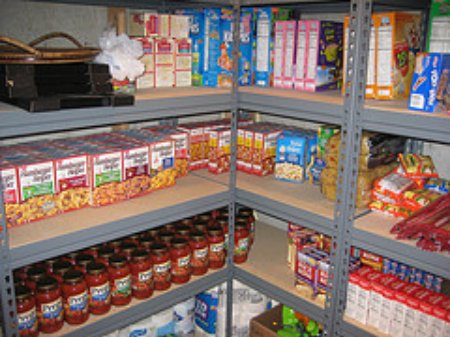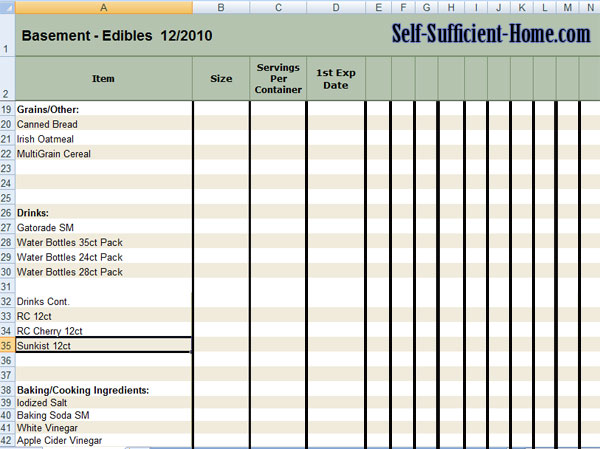We began our food storage on a whim while living in our small 600 square foot apartment. The key for us at that particular moment was the absolute need for easy, space saving storage. We have since expanded quite a bit, our needs have changed and we now have much more storage space in our current home. Soon after moving our supply to our new home we sat down to make a plan and get organized.
Buy only things that are eaten on a regular basis. This ensures constant rotation. This is especially important with short term storage items that only last a year or 2. You want to make rotation a habit. This is the easiest way to do so with cans: cansolidator. Buy things that dont require refrigeration!
Water. Water. Water. Having an ample supply of water is obviously the key to survival and comfortable living. Think total water usage, not just consumption. Water is necessary for hygiene and cooking as well as drinking. Find a way to ensure access to clean water in the event that public water systems become contaminated or power outages prevent normal well function. The solution for us is one that we use regularly when we have our prolonged winter power outages. We run our well on a gas generator.
Know what you have, what you consume, and how long your supplies will last. The easiest way is to start an inventory list the day you begin your storage and add/ subtract as things are added and eaten. If you’re like me and didnt stay on top of things, set aside an afternoon and update your inventory. I found a spreadsheet is the easiest way to do this. Include sizes, number of portions, and expiration dates. This way you can tell at a glance what you use most of and what’s about to expire. It’s also a good idea to do a quick once over of your spreadsheet when making your grocery list. Whether you decide to buy a little extra each shopping trip, once a month, or 3 times a year, you can easily see what you’ve consumed and how much you need to purchase to replenish your supply.
Here is an example of part of a running tally on a spreadsheet (nevermind the lines, they got a little wonky):
Designate an area for your storage and keep it organized! Whether you buy shelves or make your own customized for your needs, shelves are a must. Here are some examples (note the labels the first storer uses):


Here are a few resources for bulk food/ food storage:
Honeyville Farms – a huge variety of freeze dried fruits and veggies among other staples
LDS Family Home Storage – the LDS church is a fantastic resource as storage is strongly recommended for every family in the church. Buy #10 cans here.
There are so many other aspects of storage besides food. You can get as detailed and complex as you want. Include gardening, if you can, in part of your food preparedness. Maybe add a stock of vitamins to supplement the lack of vitamins and minerals if you were to live on your stored foods alone. Try to store foods that would allow for balanced meals in times of need.
The important thing is that you start. Start somewhere, anywhere. It’s easy to be overwhelmed when researching and looking at picture after picture of very impressive stocks. Know that it’s not realistic to get there overnight. Make a plan to set aside additional funds, whatever you can spare each week or month, and make it a habit! Knowing that your family won’t go to bed hungry creates an enormous sense of satisfaction.
Image sources:
https://www.pandemic-flu-guide.com/emergency-food-storage.html
https://4.bp.blogspot.com/_z4CTIOxrgys/SmXQ5KKIUEI/AAAAAAAAB1w/dd6lkwgc2sw/s1600-h/food+storage.bmp
 Timberline Homestead A self sufficient homesteading life
Timberline Homestead A self sufficient homesteading life
